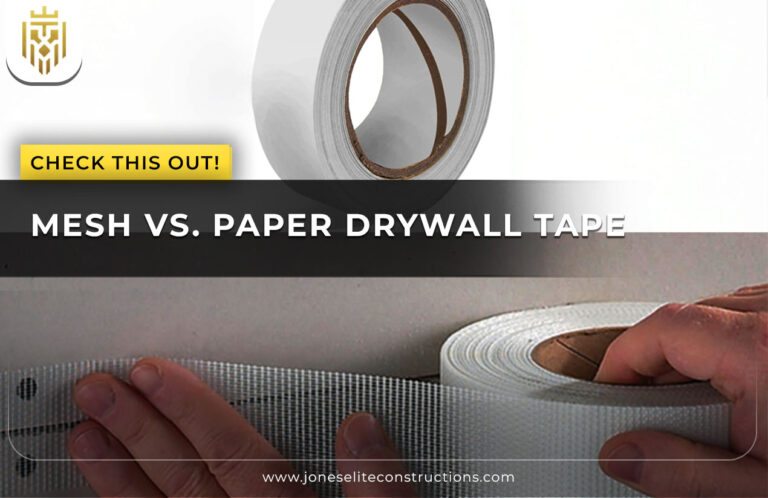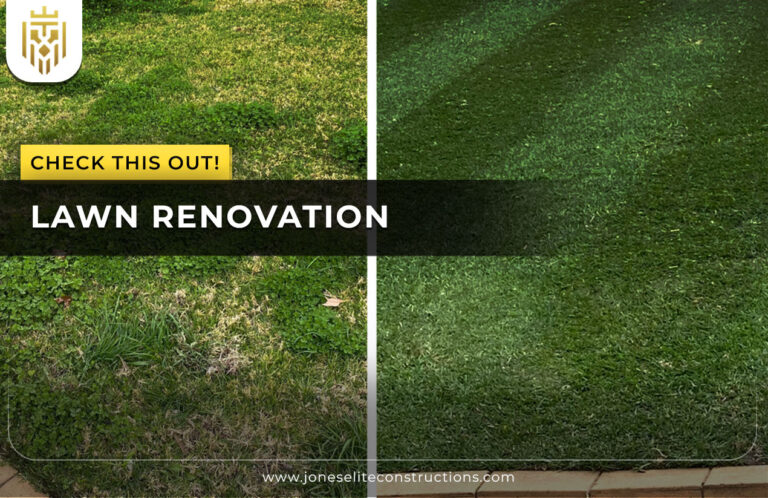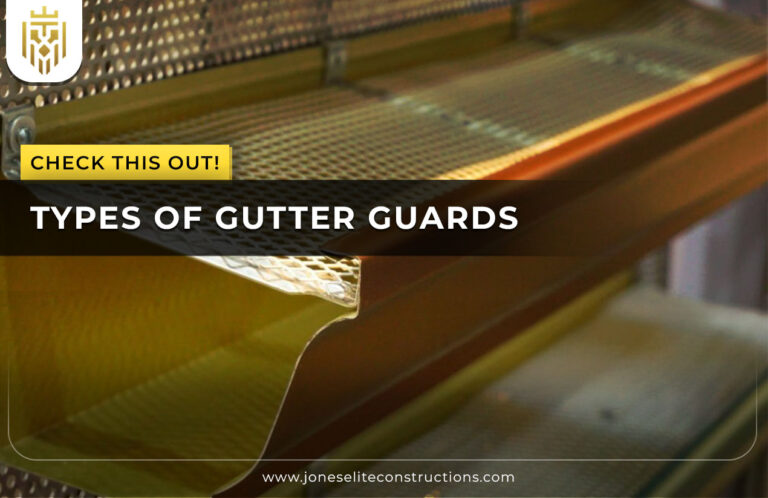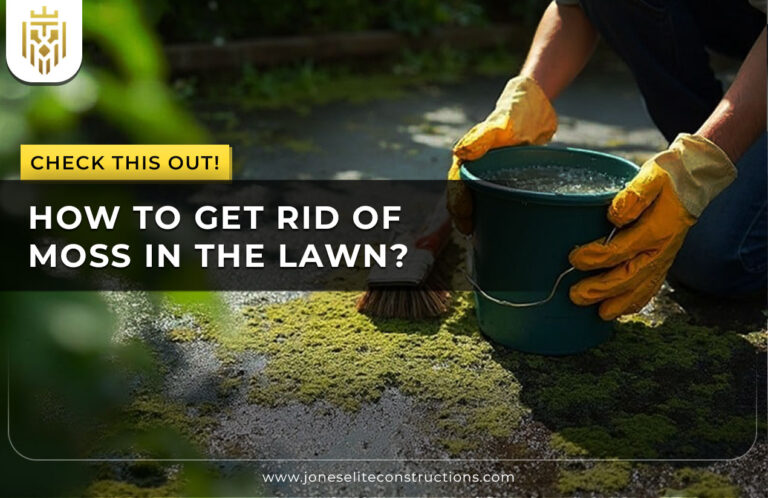What Are Box Gutters?
Box gutters are a type of rainwater system integrated into the roof structure, typically situated between different roof slopes or along the perimeter where the roof meets a wall. Whereas external gutter profiles are visible and shaped to channel water, box gutters are rectangular and concealed within the building’s architecture.
This makes them less obtrusive, yet they are designed to manage a high capacity of water flow. Due to this architectural integration, box gutters tend to be favored in commercial buildings as well as contemporary homes that desire a neat and minimalist aesthetic.
Advantages of Box Gutters
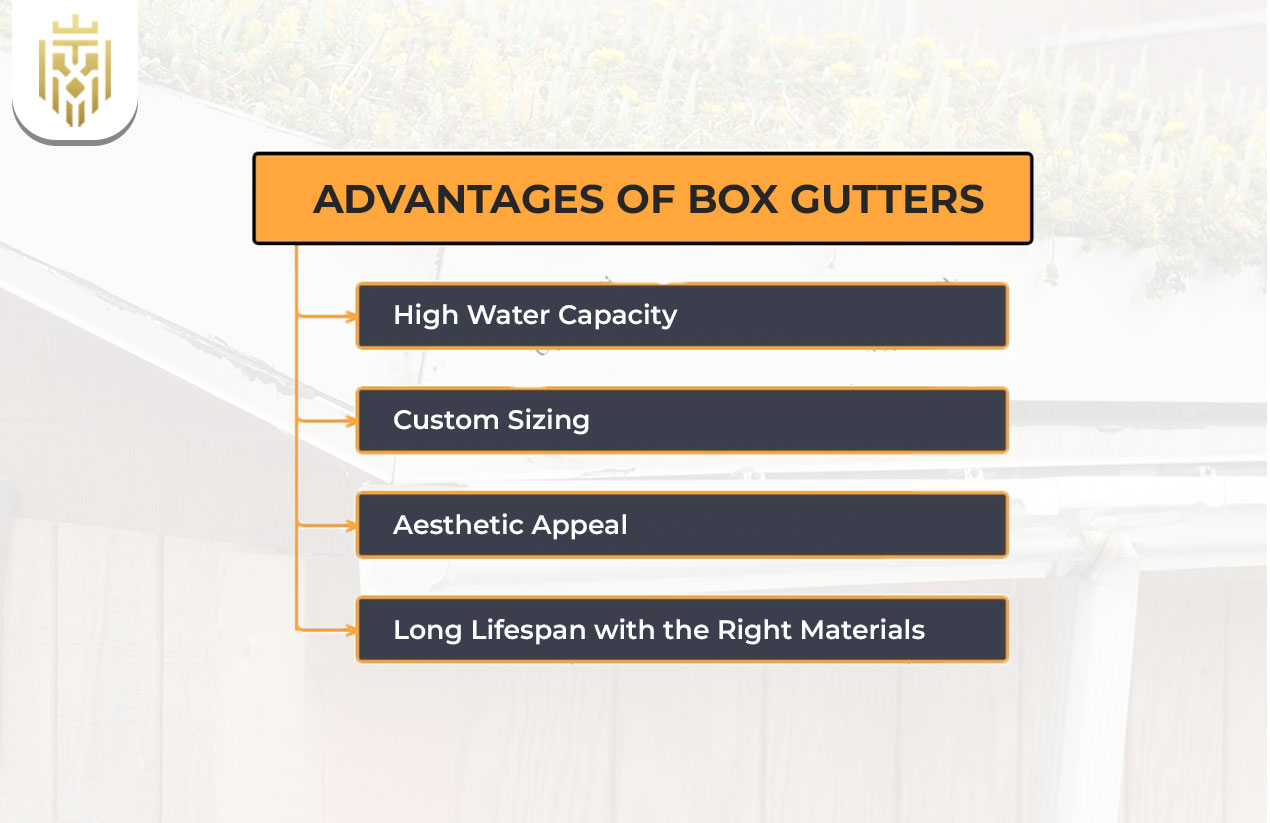
Box-style gutters come with several functional and design-related benefits. Their customization options, high capacity, and material variety allow them to serve both performance and aesthetic needs effectively.
High Water Capacity
Box gutters are ideal to use where there is a lot of rain, as the amount of water that they can hold surpasses that of more traditional gutter styles. The risk of water overflow is minimized with the use of box gutters.
Custom Sizing
Box gutters are unique in that they can be constructed to precise measurements rather than being pre-constructed. This guarantees that the box gutter not only fits perfectly but also ensures efficient water drainage specific to the needs of the structure.
Aesthetic Appeal
Unlike traditional gutters, box gutters do not disrupt the exterior of a building and are tucked inside the roofline. To a great extent, this adds to the overall beauty of the property and is appreciated in modern building designs.
Long Lifespan with the Right Materials
Proper care and use of quality materials during the installation of box gutters can see them staying in good shape for a couple of decades. Such features ensure that the damage control cost is minimal.
Box Gutter Materials
Choosing the right material is essential to ensure durability, corrosion resistance, and visual appeal. Box gutters are available in several material options, each offering unique strengths.
Galvanized Steel
As galvanized steel is one of the cheapest steels, it is also one of the most widely adopted for use with box gutters. The only possible downside is the maintenance required to prevent rust.
Colorbond Steel
Colorbond steel is in vogue for residential homes, as it not only fulfills the strength requirements but is also stylish. Additionally, it comes in an assortment of colors to match the roof and the building’s exterior.
Copper
While box gutters made of copper are quite expensive, they do offer great durability. Over time they develop their own patina, a mark of class that is truly timeless. Additionally, they require very low maintenance.
Stainless Steel
For exceptional durability and protection from corrosion, stainless steel is remarkable. It is even more advantageous for buildings located at the coast, where salty air is prevalent, as stainless steel never rusts.
How to Install Box Gutters
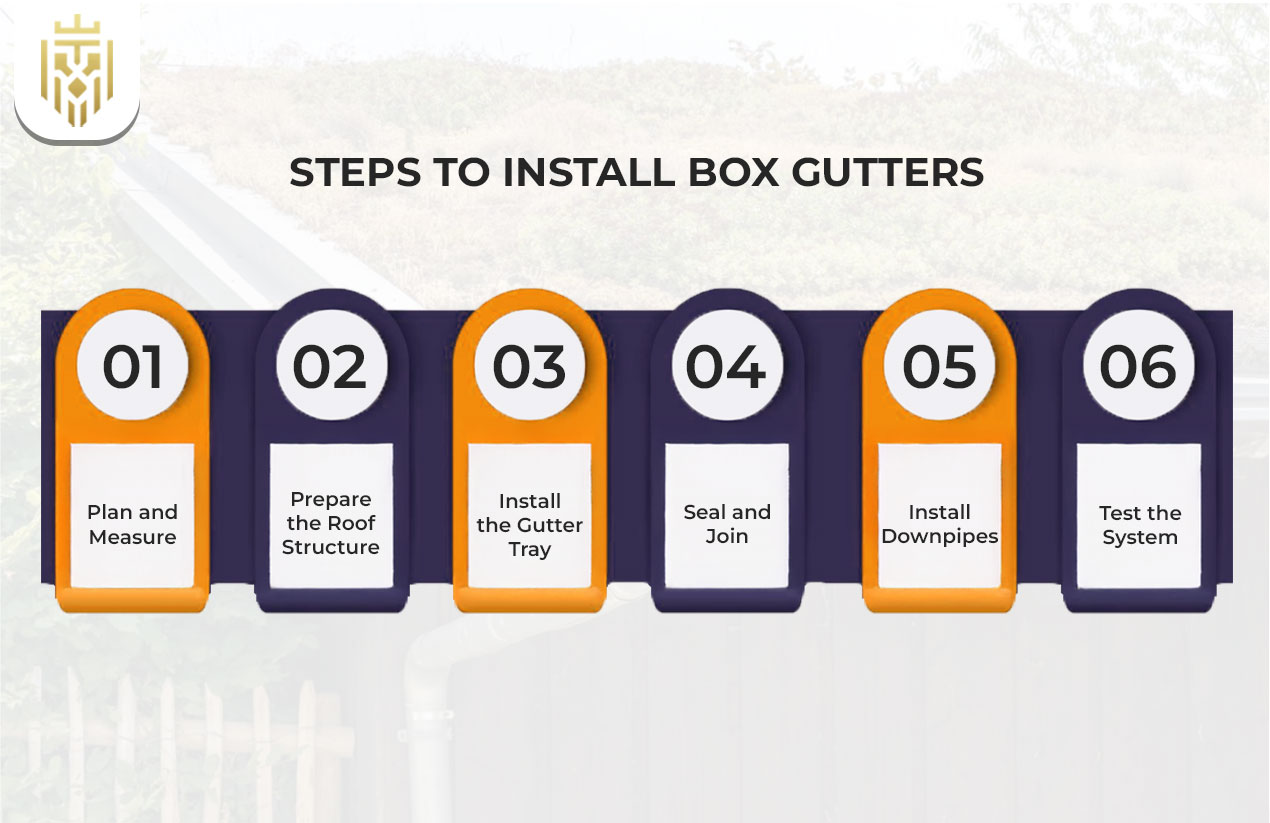
Installing box gutters requires precision and knowledge of roofing systems. Since they are integrated into the roof, it’s usually best handled by professionals to ensure correct slope, sealing, and water flow.
Plan and Measure
Start by measuring the roofline and calculating the exact dimensions of the gutter required. This should take into account the roof’s slope, the area’s expected rainfall, and the location of the downpipes. This step ensures there are no issues with the capacity and that the gutter is professionally finished.
Prepare the Roof Structure
With the knowledge that box gutters are part of the roof, the appropriate portions of the roof must be framed or cut to accommodate the gutter tray. Proper construction is essential to reduce the chances of water ingress and to ensure strong waterproofing in the future.
Install the Gutter Tray
The gutter tray is installed into the roof section that has been prepared, creating the main water channel. It needs to be placed with a proper slope so that water is able to move effortlessly towards the downpipes.
Seal and Join
Strong and leak-proof construction requires that every single joint and corner be well sealed and insulated. High-quality sealants and flashing materials improve the strength of the joining and guarantee its reliability in the long term.
Install Downpipes
Downpipes are fitted at the designated intervals to remove rainwater from the building’s foundation. Proper placement prevents the water from stagnating on the roof and avoids the overloading of any single outlet.
Test the System
Once installed, water should be flushed through the gutters to check flow and drainage. Any leaks or blockages must be addressed immediately, ensuring the system is fully operational before completion.
Box Gutters vs. Other Gutter Types
Comparing box gutters with other gutter profiles helps property owners decide which system works best for their needs. Each style has its advantages depending on water capacity, design, and installation method.
Box Gutters vs. K-Style Gutters
K-style gutters are the type of gutters that are installed on the fascia board of the roof and can be seen from the outside. They also serve as a crown molding to the roof’s edge. They are common in residential homes because of their lower installation and material cost and because they are sold in cut-to-length pieces.
Box gutters, conversely, are integrated into the roof structure, making them nearly invisible and allowing them to manage significantly larger amounts of water. Their installation is, however, more advanced and requires expert personnel, which makes them more appropriate for commercial or heavy-duty use.
Box Gutters vs. Half-Round Gutters
Half-round gutters have a semi-circular shape and a classic, refined appearance that suits old and traditional homes. Their gentle contour makes for smooth water flow and easy maintenance, but their capacity is limited compared to box gutters.
Box gutters are intended for high-volume drainage, are hidden within the roofline, and provide a neat and practical solution. While half-round gutters focus on elegance and straightforwardness, box gutters serve areas where strong and low-profile drainage is necessary.
Maintenance Tips for Box Gutters
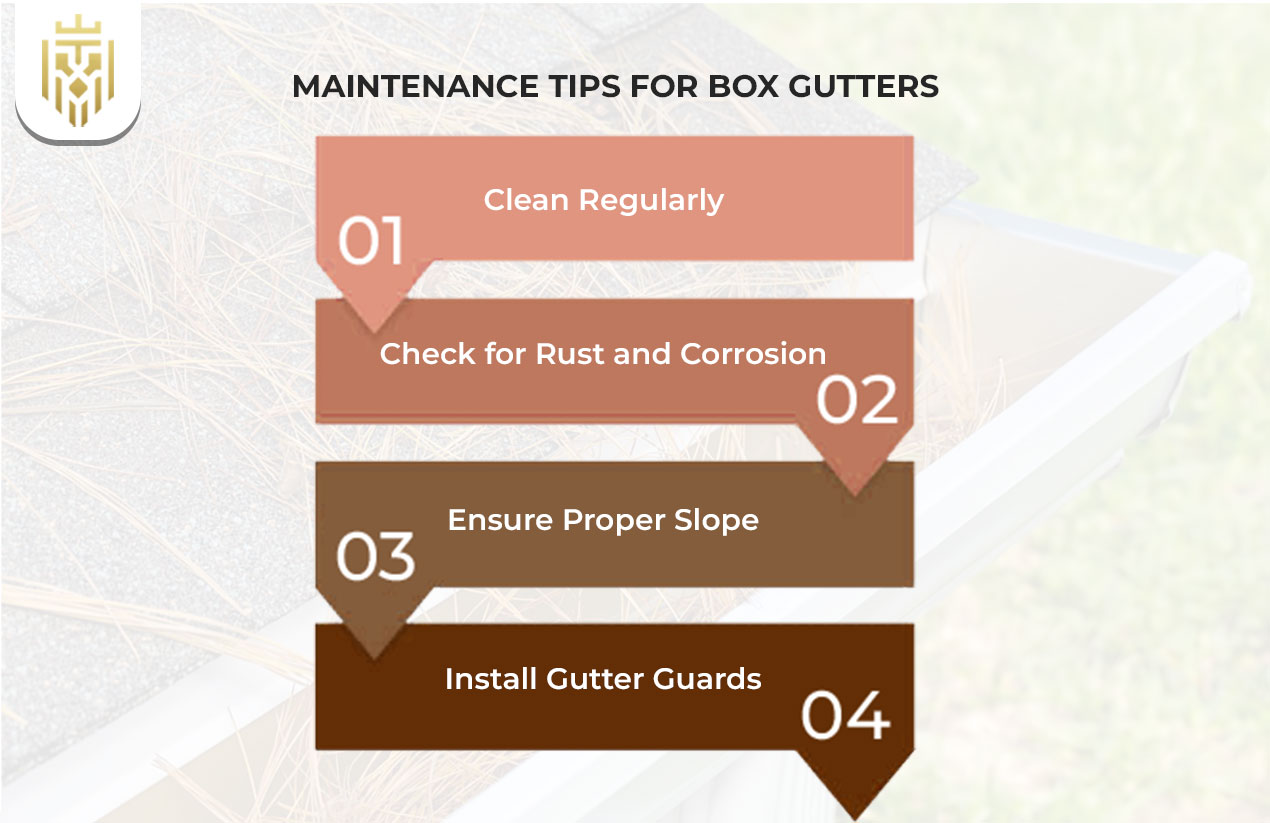
Since box gutters are concealed, they require regular upkeep to avoid hidden damage. Proactive maintenance can extend their lifespan and prevent costly roof repairs.
Clean Regularly
Blocks of leaves, small branches, and dirt should be removed regularly, with a particular focus in the autumn months for homes in the vicinity of trees. For houses in such an area, cleaning gutter might be required a couple of times yearly in the autumn months during the peak of leaf drop.
Check for Rust and Corrosion
Check metal gutters, particularly if they are made of galvanized steel, for rust from time to time. Galvanized steel is more prone to rusting, and exposed areas should be protected to preserve the integrity of the structure.
Ensure Proper Slope
Incorrect installation or natural roof movement can alter the gutter’s slope over time. Standing water may result from as little as a small misalignment, and this may cause leaks or overflow. Verifying and fixing the slope ensures effortless drainage and decreases the amount of strain on the gutter system over a long period of time.
Install Gutter Guards
With less frequent cleaning, gutter guards keep debris away. The more affordable solutions, such as leaf guards and mesh covers, help prevent blockages so that rainwater can pass through without any obstruction. This makes upkeep less frequent and easier to deal with.
FAQs
1) What Are Box Gutters?
Box gutters are rectangular drainage systems designed as part of the roof structure to drain large amounts of rainwater. They are mostly found in commercial structures and modern residential buildings where both functionality and looks are important.
2) What are the benefits of using box gutters?
They provide high water capacity, custom sizing, a seamless look, and durability, which makes them look elegant while serving their purpose. Moreover, they can be adapted to fit specific architectural designs and roof requirements.
3) What are the differences between box gutters and K-style gutters?
K-style gutters are easier to install and located externally, unlike box gutters that provide greater capacity and are integrated into the roof. Box gutters also need professional installation and provide a neater appearance since they are hidden within the roofline.
4) What is the difference between box gutters and half-round gutters?
Half-round gutters are both visible and decorative. On the other hand, box gutters are designed to be concealed and are focused on performance and volume. The half-round style is often chosen by homeowners with traditional designs, and the box-style for modern or large scale developments.
5) How to Install Box Gutters?
The process involves planning, preparing the roof structure, installing the tray, sealing joints, adding downpipes, and testing the system for leaks. Due to their complexity, installation is best handled by experienced roofing professionals.

